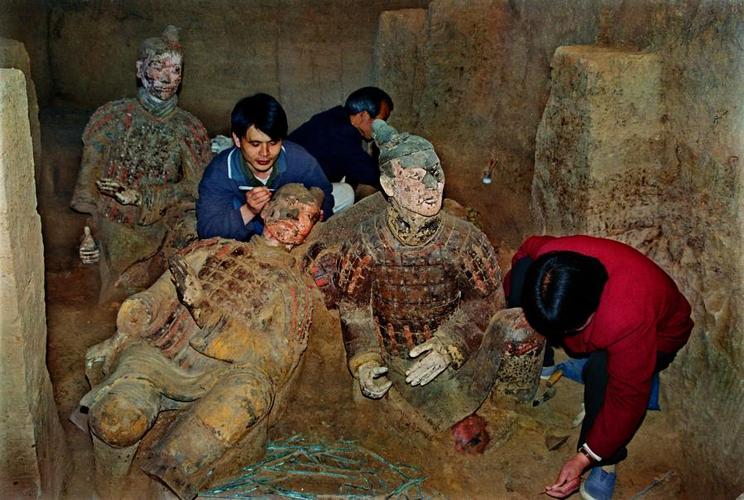
How Deep Underground Were the Terracotta Army Found?
The Terracotta Army, a vast collection of terracotta sculptures depicting the armies of Qin Shi Huang, the first emperor of China, is one of the most iconic archaeological discoveries of all time. This incredible find has captivated the world with its scale, artistry, and historical significance. But just how deep underground were these ancient warriors hidden for centuries?
The Discovery and Location of the Pits
The Terracotta Army was discovered in 1974 by farmers digging a well in Lintong District, Xi'an, Shaanxi province, China. This unexpected find quickly became a sensation, leading to large-scale archaeological excavations that continue to this day.
Four main pits have since been uncovered in the site excavations. These are located approximately 1.5 km (0.93 mi) east of the burial mound of the emperor Qin Shi Huang.
The Depth of the Terracotta Army
The four main pits containing the Terracotta Army are approximately 7 meters (23 feet) deep.
- Pit 1, the largest and most impressive, houses the main army, consisting of thousands of infantrymen, archers, and charioteers arranged in battle formation.
- Pit 2 contains cavalry and infantry units, showcasing the military might and strategic organization of the Qin army.
- Pit 3 is smaller and believed to house the command post, with high-ranking officers and their chariots.
- Pit 4 was found empty, suggesting it may have been intended for another purpose or left unfinished.
Construction and Preservation
The pits were carefully constructed, with rammed earth walls and wooden beams supporting the ceiling. The terracotta figures were then placed within, arranged in their respective formations. The depth of the pits, along with the natural layers of soil, helped protect the figures from the elements and preserved them in remarkable condition for over two millennia.
Significance of the Depth
The depth of the pits was likely chosen for several reasons:
- Protection: The depth provided a natural barrier against the elements, robbers, and potential damage from agricultural activities.
- Symbolism: In Chinese culture, the underworld holds significant meaning. Burying the terracotta army with the emperor may have symbolized their eternal duty to protect him in the afterlife.
- Preservation: The constant temperature and humidity within the earth helped preserve the terracotta figures and their vibrant pigments.
The Terracotta Army remains an awe-inspiring testament to the power and ambition of the Qin dynasty. Its discovery, buried deep beneath the earth for centuries, has provided an unparalleled glimpse into ancient Chinese civilization and military history.
Q&A
Q: What is the depth of the Terracotta Army pits?
A: The four main pits containing the Terracotta Army are approximately 7 meters (23 feet) deep.
Q: Why were the Terracotta Army buried so deep?
A: The depth likely served multiple purposes, including protection from the elements and robbers, symbolic association with the afterlife, and preservation of the figures.
Q: How did the depth help preserve the Terracotta Army?
A: The earth acted as a natural insulator, maintaining a stable temperature and humidity level that helped prevent deterioration of the terracotta and its pigments.